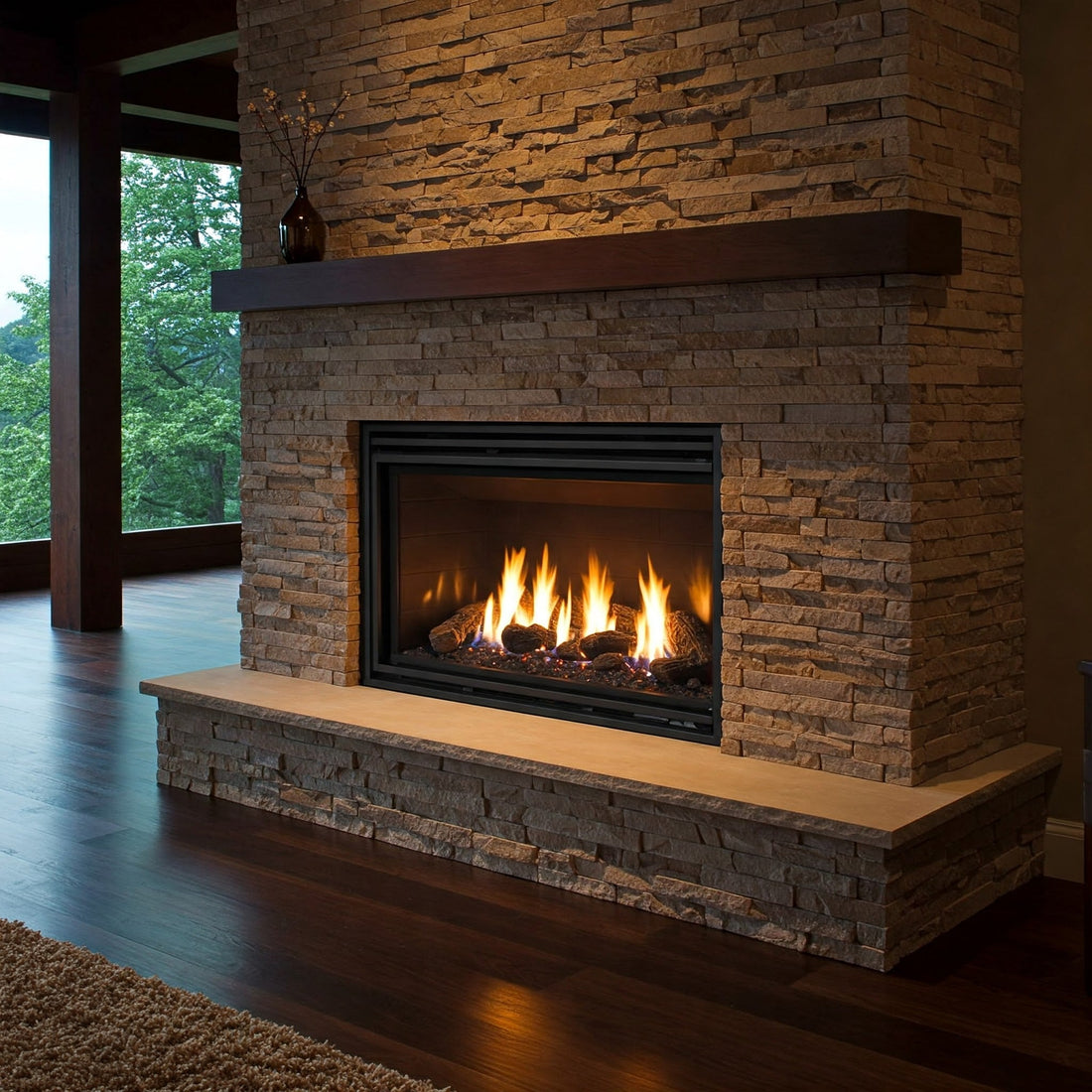
Do Gas Fireplaces Need Chimney Cleaning Too?
Share
Gas fireplaces have become a popular alternative to traditional wood-burning fireplaces due to their convenience, efficiency, and ease of use. They provide warmth and ambiance with the push of a button, offering a clean and hassle-free experience compared to burning wood. However, even though gas fireplaces don’t produce the same amount of soot or creosote as wood-burning ones, many homeowners still wonder: Do gas fireplaces need chimney cleaning too?
The short answer is: Yes, gas fireplaces do require chimney cleaning, but the reasons and frequency for cleaning are different than those for wood-burning fireplaces. Let’s take a closer look at why chimney cleaning for gas fireplaces is still necessary, how often it should be done, and what maintenance tasks are involved.
Why Do Gas Fireplaces Need Chimney Cleaning?
While gas fireplaces don’t create the same buildup of creosote that wood-burning fireplaces do, they still produce other types of debris and residue that can affect the performance and safety of your fireplace. Regular cleaning and maintenance are essential for ensuring your gas fireplace operates safely and efficiently. Here's why:
1. Buildup of Dust and Debris
Over time, dust, dirt, and debris can accumulate inside your gas fireplace, including the chimney and venting system. This debris can affect the flow of air and cause poor ventilation, leading to inefficiency. If not cleaned, it can also create a fire hazard, particularly if it blocks the exhaust vent or gas line.
2. Carbon Monoxide (CO) Risk
Gas fireplaces are designed to safely vent combustion gases, including carbon monoxide, out of the home. If the venting system becomes clogged or obstructed due to debris or dust buildup, it can prevent harmful gases from being expelled properly, leading to a potential carbon monoxide risk. Regular chimney cleaning helps ensure that gases are vented safely out of the home.
3. Corrosion of Vents and Chimney Components
While gas fireplaces don’t produce creosote, they do produce moisture and acidic condensation as a byproduct of combustion. Over time, this moisture can cause corrosion to the metal components of the chimney, venting system, and burner assembly. If the chimney or vent components become corroded, they may not function properly, which could lead to dangerous leaks or malfunctions.
4. Proper Functioning of the Gas Fireplace
Gas fireplaces require a clean environment to operate efficiently. If the venting system becomes clogged or dirty, it can restrict airflow and reduce the fireplace’s efficiency, causing it to burn more fuel and lose heat. In addition, a dirty fireplace can create unpleasant odors, smoke, or even cause the appliance to shut down unexpectedly.
How Often Should You Clean Your Gas Fireplace Chimney?
The frequency of chimney cleaning for gas fireplaces depends on several factors, such as how often the fireplace is used and the type of system you have. As a general guideline:
-
Annually: It's recommended to have your gas fireplace inspected and cleaned at least once a year. Even though gas fireplaces don’t accumulate creosote like wood-burning units, they still need to be checked for dust, debris, and corrosion. An annual cleaning and inspection can also identify potential issues before they become serious problems.
-
After Heavy Use: If you use your gas fireplace frequently, especially during the winter months or for long periods of time, you may need to have it cleaned more often. The buildup of dust, debris, or moisture could happen faster with heavy use, so monitoring the performance of your fireplace and scheduling an extra cleaning might be necessary.
-
If You Notice Issues: If you notice any unusual smells, smoke, or a decrease in the efficiency of your gas fireplace, it’s a sign that the chimney and venting system may need attention. It’s better to address any problems sooner rather than later to prevent further complications or safety hazards.
What Does Chimney Cleaning for Gas Fireplaces Involve?
Cleaning a gas fireplace chimney is not the same as cleaning a wood-burning chimney, but it still requires attention to detail. Here are the main tasks that are typically performed during a gas fireplace chimney cleaning:
1. Inspection
The first step in the cleaning process is a thorough inspection of the fireplace, chimney, and venting system. A professional chimney sweep will check for any blockages, leaks, or signs of wear and tear in the system. They will also ensure that the gas lines and burners are functioning correctly.
2. Cleaning the Venting System
The venting system, which carries combustion gases out of the home, will be cleaned to remove any dust, debris, or buildup. The sweep will ensure that the vent is clear and that gases can be safely expelled from the fireplace.
3. Cleaning the Burner and Pilot Light Area
The burner and pilot light assembly will be inspected and cleaned. Dust and debris can accumulate around these areas, causing the burners to perform inefficiently. Cleaning the burner ensures a clean and efficient flame and prevents any potential clogs.
4. Cleaning the Glass Door and Surrounding Area
While gas fireplaces generally don’t produce as much soot as wood-burning ones, the glass doors can still accumulate smoke residue and other deposits. A thorough cleaning will ensure the glass is clear, allowing you to enjoy the full aesthetic benefits of the fireplace.
5. Checking for Corrosion or Wear
The chimney sweep will also check for any signs of corrosion or wear on the metal components of the chimney and venting system. If corrosion is found, repairs or replacements may be necessary to ensure the fireplace is safe to use.
6. Checking the Gas Line and Vent Cap
Finally, the gas line and vent cap will be checked to ensure there are no leaks or blockages. A malfunctioning gas line or blocked vent can lead to dangerous situations, so it’s important to have these areas inspected regularly.
DIY vs. Professional Cleaning
While it may be tempting to clean your gas fireplace yourself, it’s always a good idea to hire a professional chimney sweep who is experienced in working with gas appliances. Chimney cleaning requires specific knowledge of gas systems and safety protocols. A professional will have the right tools and expertise to clean the fireplace properly and identify any potential issues before they become serious problems.
Conclusion
In short, gas fireplaces do require regular cleaning and maintenance to ensure they remain safe and efficient. While they don’t produce creosote like wood-burning fireplaces, they can still accumulate dust, debris, and moisture, which can affect performance and create safety hazards. By scheduling an annual inspection and cleaning with a professional chimney sweep, you can keep your gas fireplace running smoothly, reduce the risk of dangerous gas leaks or carbon monoxide buildup, and enjoy the warmth and ambiance it provides for years to come.
